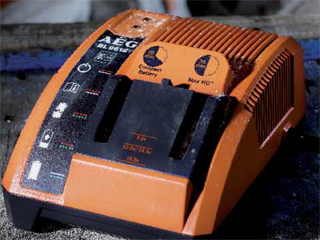How to Choose Cordless Drill Charger
Chargers

Power tool chargers recharge a Hitachi cordless tool batteries. There are a multitude of chargers available, but there there may only be one that will charge your batteries. This is because each charger can only charge one particular brand’s batteries, only a set range of voltages, and sometimes only certain technologies. Some chargers don’t just charge your cordless tool’s batteries either – they monitor their health and care for them. They are commonly overlooked during the purchasing process, but play an equally important part in the operation of a cordless tool as the batteries and the tool itself.
Simple Chargers

Simple power tool chargers usually consist of a plastic charging cradle that fits over the batteries contacts, and are connected to a transformer and a standard 10A power plug. Their are also versions where the battery sits in the cradle (similar to intelligent chargers, see below)
They are generally found on lower quality Nickel-Cadmium (NiCd) cordless tools, and are very simple in design and to use. Charging times generally range from about 3 to 5 hours.
During operation, there is normally one small red light that glows to indicate that charging is taking place. It is the role of the user to ensure that the Bosch battery is removed at the conclusion of the charging time. If this is not done, the battery can become damaged from overcharging. It is becoming more common to see these chargers equipped with timers or temperature control to avoid such damage.
Batteries should never be charged while they are either too hot or too cold, as they will not charge correctly and may be harmed. Simple chargers again have no safeguard against this.
Intelligent Chargers

These chargers are commonly found on higher quality cordless tools, and are stand-alone units that the batteries slide onto/into.
There are a few main differences with intelligent power tool chargers (compared to simple chargers) that make them a much more worthwhile investment.

- They communicate with a memory chip inside a battery, assess it’s condition and charge the battery accordingly
- They sometimes have cooling fans to slowly reduce the temperature of the battery before/during charging, and don’t begin charging until the battery is at room temperature
- They have faster charge times, anywhere from 20 minutes to 1 hour
- They have a greater capacity to communicate to you how the charging process is going. This is done through multiple lights on the charger’s interface
- They automatically cut off charge to the battery once charging is complete
- They may be able to charge multiple types of batteries, e.g. both Nickel-Cadmium (NiCd) and Lithium-ion (Li-ion), giving you added versatility and support in the future
When charging a battery, some intelligent chargers may exhibit behaviour on their interfaces that mimics the signs of a broken battery. If this happens, it is highly likely that the charger is communicating with the battery and devising the optimum way to charge it. Simply leave the battery in the charger and charging will resume in due course (this can take anywhere up to 40 minutes on some models).
Articles List
- 1. How to Care for Your Li-ion Drill Batteries?
- 2. The 18v Li-ion Power Tool Battery Blues
- 3. How Do I Rebuild a DeWalt DC9096 Battery?
- 4. How to Care for Your Li-ion Drill Batteries?
- 5. Power Tool Battery for DEWALT DW9096
Type: Ni-MH
Volt: 18V
Capacity: 2200mAh